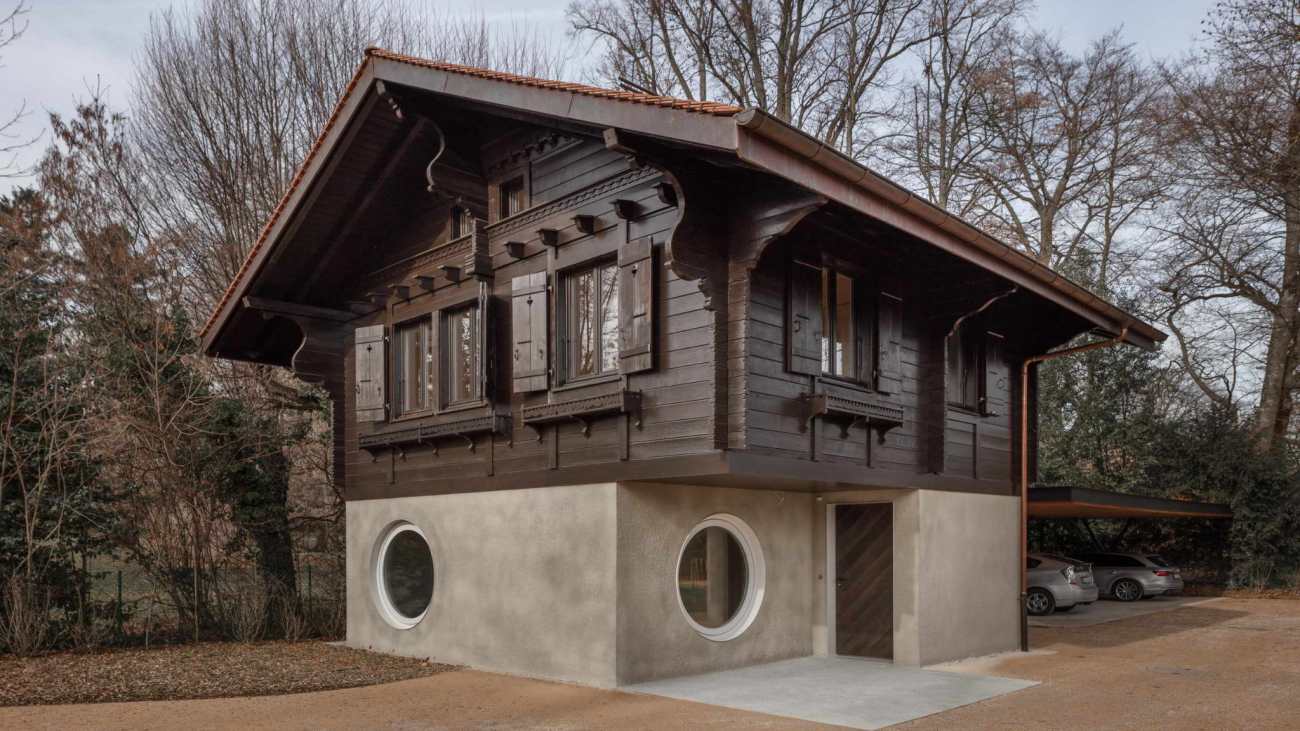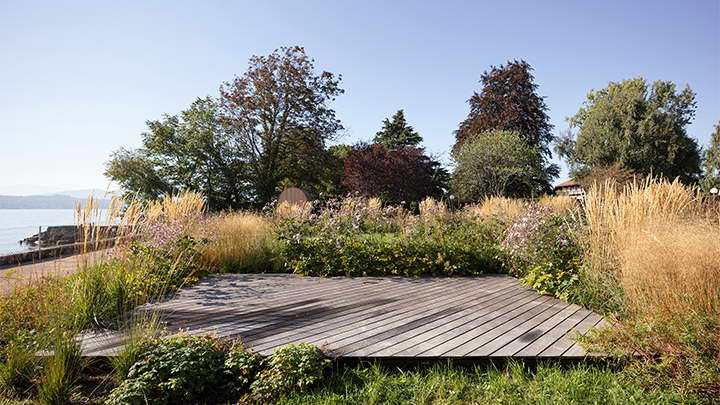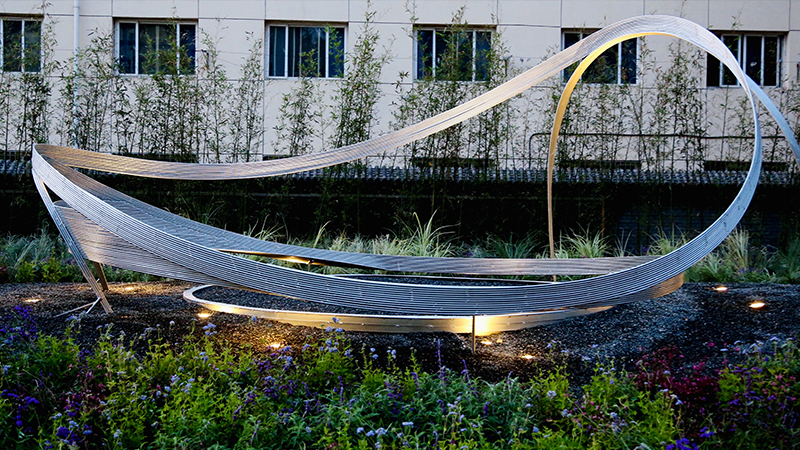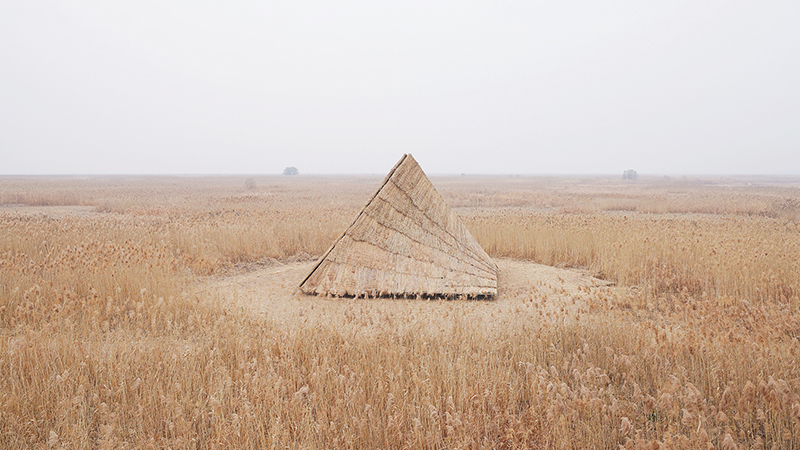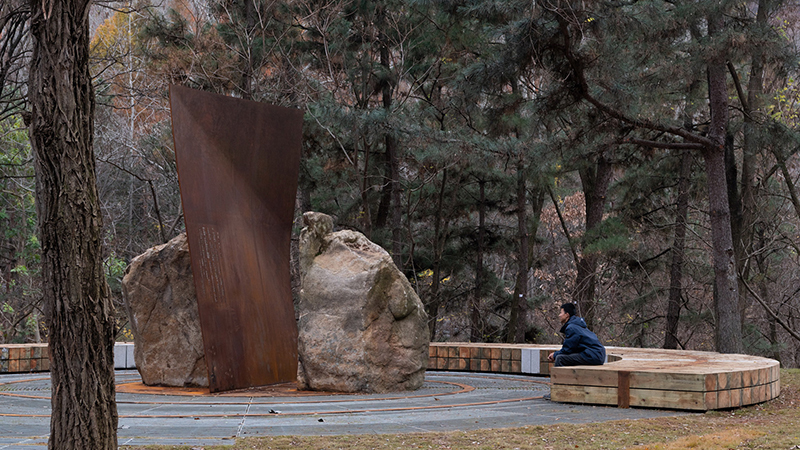项目位于Bois-de-la Balaâ tie,是一项为了研究水鸟科的临时栖息地开展的项目。设计师们探索了不同的方法,比如,考虑到与场地的融合,以及为占据鸟舍的两足动物创造一个特别的栖息地。客户要求建造两个“鸟笼”,一个用于隔离凤头鹦鹉,另一个用于观赏外来鸟类,随着项目的推进第二个鸟舍被改造成当地稀有物种的鸟舍。
The project for a new aviary at Bois-de-la Bâtie was the opportunity to examine a specific programme: a provisional habitat for anatidae (family of aquatic birds). The architects explored different avenues taking into account, for instance, sensitive integration into the site and the creation of a specific habitat for the bipeds occupying the aviaries. The contracting authority’s request: to build two aviaries, one for anatidae in quarantine and another for exotic birds. As the project advanced this second aviary was transformed into an aviary for rare native species.
设计师决定将项目置于人工岛的中心位置,必须经过该岛才能到达巴提公园,并将其转变为一个“鸟岛”,即使是婴儿车也可以在前往公园的路上经过这个人造的岛。
The architects chose to place it in the centre of an artificial island that must be crossed to reach Parc de la Bâtie and to transform it into a “bird island” through which strollers would pass on their way to the park.
为推动对公园整体的反思,我们决定建造一个屋顶,把两个鸟笼连接在一起,作为公园的新入口。鸟巢通过两个主要元素融入到环境中:受场地形状启发的屋顶形状,与周围树冠和支撑的混凝土板的树形结构相互作用。
With the aim of prompting rethinking of the park as a whole, the decision was taken to create a single roof joining the two aviaries making it the new entrance to the park. The aviary was integrated into its host environment by two main elements: a roof shape, inspired by the site’s morphology, interacting with the crowns of surrounding trees and a tree-like structure supporting the reinforced concrete slab.
房顶的形状划定了鸟舍的边界,被柔软的金属网包围,包括有组织形状的混凝土区域。构成项目的16个柱子都是单独设计的,它们的形式都受到周围树木的启发。
The roof shape creates the general volume of the aviaries that are enclosed by supple metal netting encompassing the organic shapes of the concrete area. Each of the sixteen pillars constituting the structure is independently designed, its form inspired by the trees surrounding the aviary.
采用实验性方法来进行复杂、棘手、复杂的静态计算,这需要建筑师和土木工程师之间非常密切的合作。按照 AntoniGaudi最初在巴塞罗那圣家堂中使用的静态计算方法,然后由德国工程师 Frei Otto改进的方法,科学计算出了整个直径为15厘米的支柱的完美平衡。
The tricky, complex static calculation was carried out using an experimental method that required very close collaboration between the architects and the civil engineers. Based on a method that was first developed by Antoni Gaudi for the static calculation of Sagrada Familia in Barcelona and then perfected by the German engineer Frei Otto, the perfect balance of the pillars, all with a diameter of 15 cm, was calculated by the scientific transposition of studies of physical models.
结果是形成了悬浮模型独特的结构设计,圆柱的不同颜色也能反映现场情况,项目周边的照片被像素化,然后选择6种合成颜色,将它们分散在16个柱子中,旨在是使这些色彩与周围环境的色调相协调。覆盖在鸟笼上的金属网被设计为一种柔和的体块,暗示了透明和光线的作用。
The result was a unique structural design stemming from suspended models. The varied colours of the pillars also mirror the site. A photo shot of the landscape was pixelled, then 6 synthetic colours were chosen and worked for dispersal on the sixteen pillars. The aim was for these colours to create a dialogue with the tones of their immediate surroundings. The metal netting enveloping the aviary was designed to define a supple, gentle volume, suggesting transparencies and plays on light.
项目名称:Volière
设计单位:BUREAU
网站:https://bureau.ac/
项目地点:瑞士 日内瓦
竣工年份:2008
项目规模:300 m2 x 9 m
其他参加者:Group8
图片来源:©Dylan Perrenoud
Project name: Volière
Company name: BUREAU
Website: https://bureau.ac/
Project location: Geneva, Switzerland
Completion Year: 2008
Building area (m²): 300 m2 x 9 m
Other participants: Group8
Photo credits: Dylan Perrenoud
更新日期:2020-07-29 15:02:42
非常感谢 BUREAU 带来的精彩项目, 查阅更多Appreciations towards BUREAU for sharing wonderful work on hhlloo. Click to see more works!







